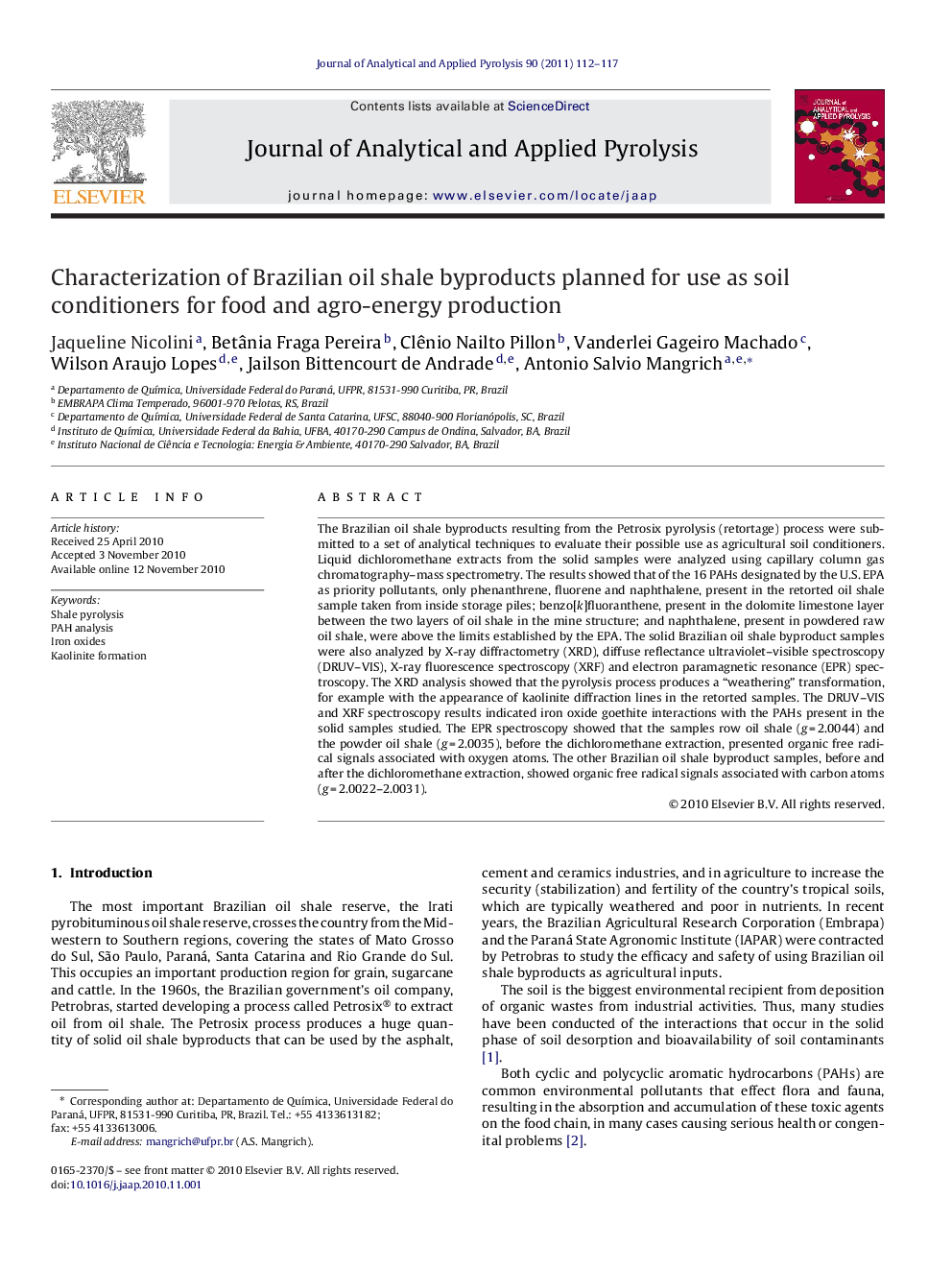| Article ID | Journal | Published Year | Pages | File Type |
|---|---|---|---|---|
| 7607144 | Journal of Analytical and Applied Pyrolysis | 2011 | 6 Pages |
Abstract
The Brazilian oil shale byproducts resulting from the Petrosix pyrolysis (retortage) process were submitted to a set of analytical techniques to evaluate their possible use as agricultural soil conditioners. Liquid dichloromethane extracts from the solid samples were analyzed using capillary column gas chromatography-mass spectrometry. The results showed that of the 16 PAHs designated by the U.S. EPA as priority pollutants, only phenanthrene, fluorene and naphthalene, present in the retorted oil shale sample taken from inside storage piles; benzo[k]fluoranthene, present in the dolomite limestone layer between the two layers of oil shale in the mine structure; and naphthalene, present in powdered raw oil shale, were above the limits established by the EPA. The solid Brazilian oil shale byproduct samples were also analyzed by X-ray diffractometry (XRD), diffuse reflectance ultraviolet-visible spectroscopy (DRUV-VIS), X-ray fluorescence spectroscopy (XRF) and electron paramagnetic resonance (EPR) spectroscopy. The XRD analysis showed that the pyrolysis process produces a “weathering” transformation, for example with the appearance of kaolinite diffraction lines in the retorted samples. The DRUV-VIS and XRF spectroscopy results indicated iron oxide goethite interactions with the PAHs present in the solid samples studied. The EPR spectroscopy showed that the samples row oil shale (g = 2.0044) and the powder oil shale (g = 2.0035), before the dichloromethane extraction, presented organic free radical signals associated with oxygen atoms. The other Brazilian oil shale byproduct samples, before and after the dichloromethane extraction, showed organic free radical signals associated with carbon atoms (g = 2.0022-2.0031).
Keywords
Related Topics
Physical Sciences and Engineering
Chemistry
Analytical Chemistry
Authors
Jaqueline Nicolini, Betânia Fraga Pereira, Clênio Nailto Pillon, Vanderlei Gageiro Machado, Wilson Araujo Lopes, Jailson Bittencourt de Andrade, Antonio Salvio Mangrich,
